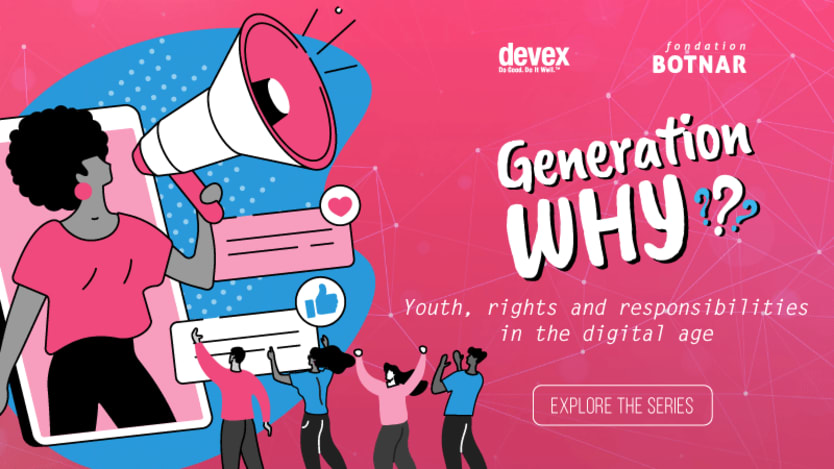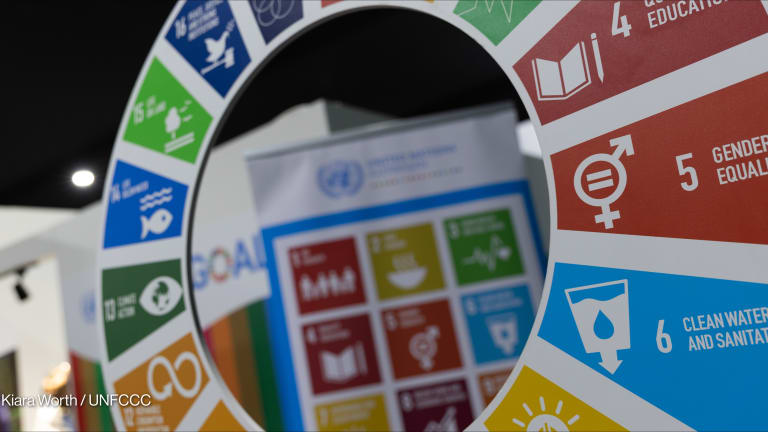
In its first year of producing its own films and television shows, Netflix became the first streaming service to win a Primetime Emmy Award. In the nine years since, it has won 16 Academy awards and over 100 Primetime Emmys, rivaling HBO’s record accumulated over decades.
The success of Netflix and other “disruptive” companies like Uber and Amazon — as well as their online shopping counterparts in low- and middle-income countries such as India’s Flipkart and Nigeria’s Jumia — has come through the honing of their product offering using insights from the data generated by their consumers, to which they have exclusive access and control. Its years as a streaming service helped Netflix understand viewing preferences so it could catapult itself into a top content production company without years of trial and error.
This data analytics advantage explains how “big tech” companies can establish dominant, and potentially insurmountable, places in their respective industries. And it’s not just industry — policymakers too see the opportunities to drive innovation in their interactions with, and understanding of, the public.
Since the start of the pandemic, government investment in e-government systems has skyrocketed. These systems have given rise to China’s well-known ambitions of a social credit system, but also enabled countries such as Chile to use its intersectoral databases to determine the eligibility of social welfare benefits far more efficiently and cost-effectively.
If industry and government can benefit from data, what about the average person? And not just me — and likely you, the reader — but the world’s most disadvantaged for whom the promise of the data economy is most elusive?
The digital development field has spent the last 20-plus years focused on ‘digitizing’ to transform service delivery. The time has come to put the focus back on people.
—It is said that “data is the new oil” because of its lucrative potential as a resource. It is in some ways a flawed analogy, but it does one thing well by reminding us that resource abundance does not guarantee benefit for all.
Throughout history, the abundance of natural resources such as oil, diamonds, and minerals has been a catalyst for increasing inequality, strife, and authoritarianism. As the reliance on data grows, we must ask what’s needed if we are to avoid turning data into the 21st century resource curse. How do we ensure data favors the many, rather than the few? This question is especially pertinent to LMICs where the data economy is only just beginning and the opportunity to thwart trends of data dominance is still possible.
Data ‘portability’ is key
As more people get online and their individual data endowments expand, individuals should be able to leverage their data history to demonstrate creditworthiness showing their spending history, or secure a new job through their education history, or being able to receive health care at their provider of choice by virtue of having their medical history in hand.
The value of having meaningful control over one’s personal credentials and data history is particularly valuable in LMICs, allowing people to prove who they are, showcase their employment history and skills, and much more. In a data-sharing environment, business innovators too could tap into data silos to analyze trends and tailor products to meet people’s needs. Moreover, data portability reduces the friction for a user to switch from one technology environment to another, allowing them to “vote with their feet” by taking their data elsewhere.
India has embarked on an ambitious effort to give people control over their data. This national strategy establishes newly regulated entities to act as fiduciaries on behalf of individuals when interpreting the terms and conditions of data requests. It holds the key to cash flow-based lending, so that, for example, the country’s 63 million micro-, small-, and medium-enterprises can borrow capital with more favorable terms using their cash flow instead of balance sheet as proof.
Importantly, we know it matters to people to have meaningful choice over who receives their personal data. A CGAP study found that 30% of people studied in Kenya chose a loan offering with a 10% fee and strong data privacy over a 5% loan with lower data protections. The results were similar in India.
Data portability is no silver bullet, and addressing data inequalities will not mitigate against other harms caused in the digital landscape in the form of surveillance, mis/disinformation, and algorithmic biases. However, it is a first step in ensuring that more people and small businesses can also reap the rewards of data that currently resides in the grip of big companies and governments.
Creating a more equal data playing field requires at least four components:
1. Legal and policy foundations must support open data and data portability by articulating the individual’s rights over personal data and create clear mechanisms for exercising those rights. A sound legal basis will also articulate the obligations on entities who collect, store, and process personal data.
2. Technological infrastructure can facilitate safe data sharing and, when done well, creates the audit trail of data transfer that allows authorities to oversee the data ecosystem.
3. Third-party fiduciaries that serve as agents of people can mitigate the risks of “over-consent.” A data-sharing ecosystem will not be successful if all the responsibility is on the individual to understand the fine print of data collection and exchange. But regulated fiduciaries can serve as representatives of people’s interests ensuring data requests are reasonable, and that data exchange is minimized to only what is requested.
4. Finally, the pillars of a safe data ecosystem rest on analog investments in data literacy, data rights training, responsive complaint systems, a thriving civil society that can hold governments and companies accountable, ongoing research to understand user experiences, and so much more.
Time to act
These steps are not easy and tremendous political will is required to overcome the natural tendencies of data inequalities. But we can take lessons from pioneering approaches in India, Singapore, and Estonia, which are all demonstrating important models for data sharing that attempt to broaden the benefits of this new asset we call data, as I documented in this 2020 World Bank report “Unraveling Data’s Gordian Knot.”
For LMICs where the data economy has yet to fully take hold, there is a real — and perhaps fleeting — moment to establish a strategic posture around data sharing that ensures its benefits are more broadly shared across society.
The digital development field has spent the last 20-plus years focused on “digitizing” to transform service delivery. The time has come to put the focus back on people. Let’s consider how each person can harness the power of their data to improve their lives and then create the conditions for them to do so.
Visit the Generation Why series for more coverage on how we can ensure the digital space advances the rights of all young people and leaves no one behind. You can join the conversation using the hashtags #DevexSeries on #DigitalRights.









